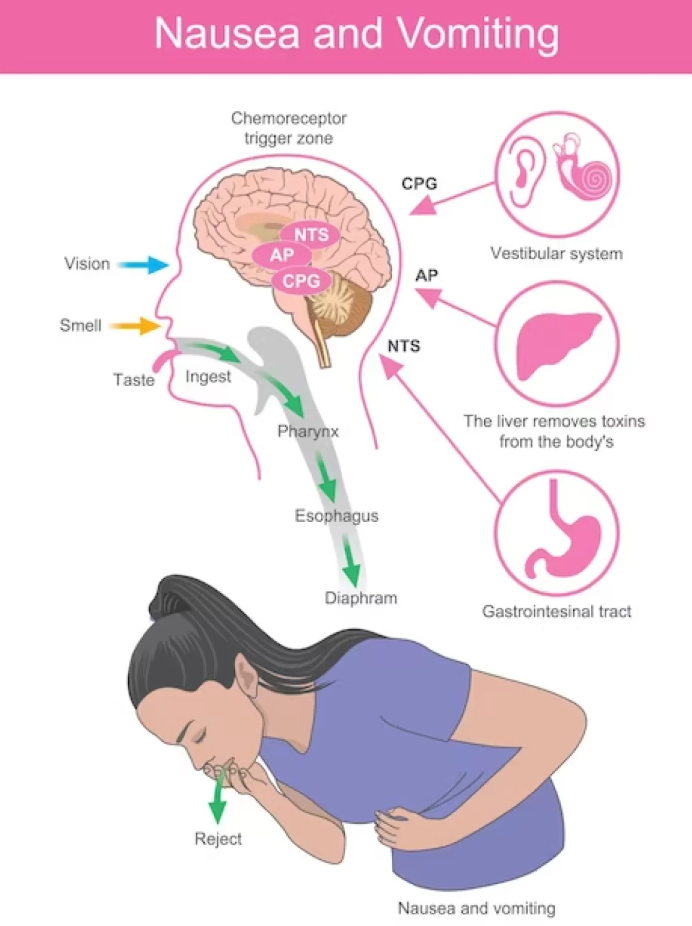A recent simulation has provided an in-depth look into the body’s internal mechanisms during the act of vomiting, leaving many viewers both intrigued and unsettled. This detailed visualization illustrates the complex physiological processes that occur as the body expels unwanted substances. For those curious about the intricacies behind this reflex, here’s an exploration of the science and the sequential events that lead to the act of vomiting.
Understanding the Vomiting Mechanism
The simulation, developed by GutDR and widely circulated on social media platforms, offers a comprehensive tour through the digestive system during a vomiting episode. It focuses on key components such as the small intestine, pyloric sphincter, stomach lining, and esophagus, depicting a bright green fluid accumulating at the stomach’s base.

As the simulation advances, droplets of this green fluid ascend from the small intestine, filling the stomach. Upon reaching full capacity, the body initiates the retching process. The diaphragm and abdominal muscles contract in unison, transmitting signals through the vagus and splanchnic nerves to the esophagus. This coordinated effort propels the stomach’s contents upward, culminating in expulsion.
One observer remarked on social media, “I think I could’ve gone without knowing how this happens,” while another confessed, “I almost vomited seeing this.”
The Biological Basis of Vomiting
Vomiting serves as the body’s protective response against perceived dangers such as toxins, infections, or other irritants. The process is initiated in the brain’s chemoreceptor trigger zone (CTZ), which detects chemical signals indicating potential harm, such as excessive alcohol or elevated stress hormones.
Once a threat is recognized, the CTZ sets off a series of reactions:
- Increased Salivation: The mouth generates additional saliva to safeguard teeth and gums from the corrosive effects of stomach acid.
- Diaphragm Pulsation: The diaphragm contracts rhythmically to increase pressure on the stomach.
- Closure of the Glottis: This action seals the airway, preventing inhalation of stomach contents into the lungs.
- Tightening of Abdominal Muscles: The intensified pressure forces the stomach’s contents upward.
- Concurrently, the sympathetic nervous system elevates heart rate, often leading to sweating and a general sense of discomfort.

Reflecting on Lifestyle Choices
While vomiting is a natural defense mechanism, it also serves as a reminder to be mindful of our consumption habits. Overeating, consuming spoiled food, or excessive alcohol intake can trigger this intense bodily response. After viewing the simulation, one individual humorously noted, “Maybe Sober November doesn’t sound so bad after all.”
The simulation not only clarifies the vomiting process but also highlights the intricate nature of the body’s defense systems. Despite its discomfort, vomiting demonstrates the remarkable coordination between the brain and digestive system to protect health, even if it results in an unpleasant experience.
This vivid portrayal of vomiting offers more than just unsettling visuals—it emphasizes the wonders of human physiology, illustrating that even the most disagreeable experiences serve essential functions.

















